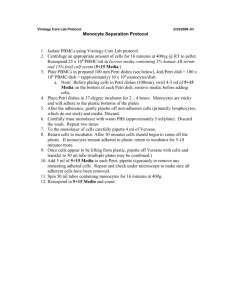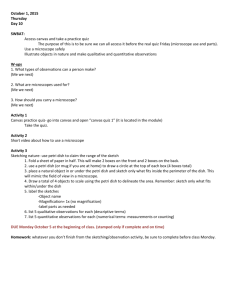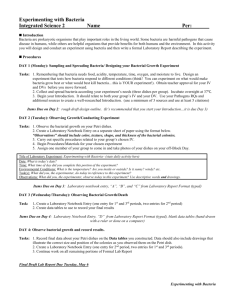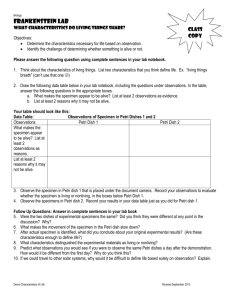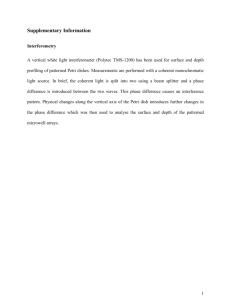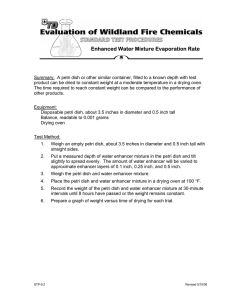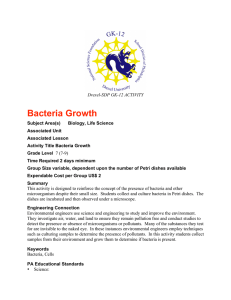Testing the effectiveness of bacteria killing agents
advertisement
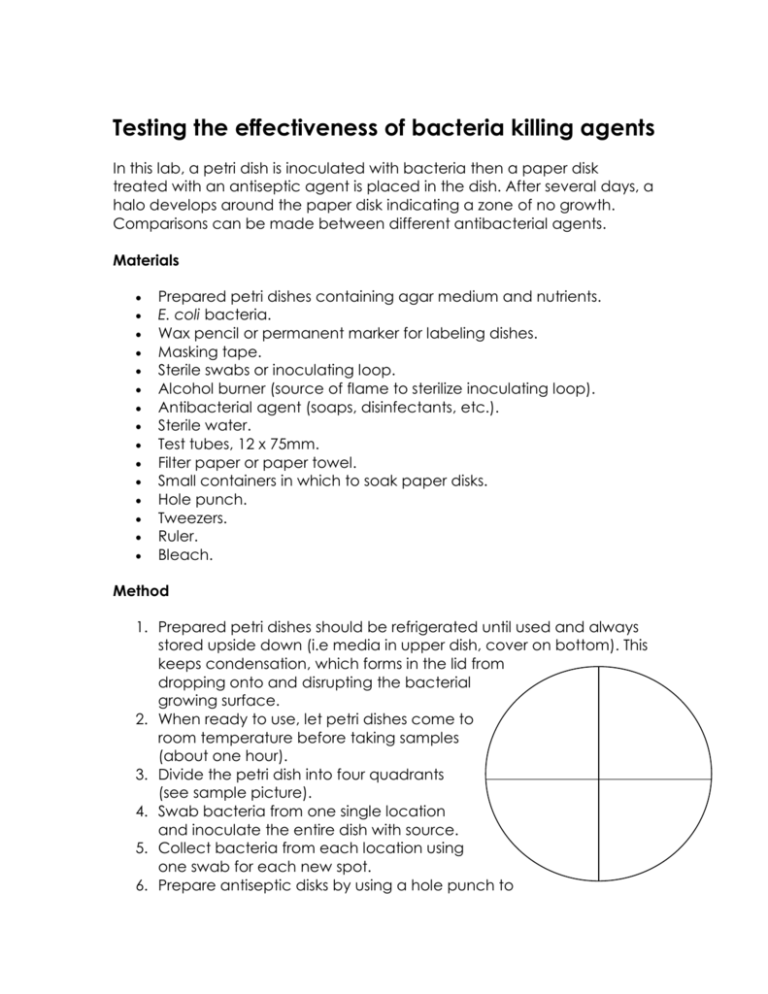
Testing the effectiveness of bacteria killing agents In this lab, a petri dish is inoculated with bacteria then a paper disk treated with an antiseptic agent is placed in the dish. After several days, a halo develops around the paper disk indicating a zone of no growth. Comparisons can be made between different antibacterial agents. Materials Prepared petri dishes containing agar medium and nutrients. E. coli bacteria. Wax pencil or permanent marker for labeling dishes. Masking tape. Sterile swabs or inoculating loop. Alcohol burner (source of flame to sterilize inoculating loop). Antibacterial agent (soaps, disinfectants, etc.). Sterile water. Test tubes, 12 x 75mm. Filter paper or paper towel. Small containers in which to soak paper disks. Hole punch. Tweezers. Ruler. Bleach. Method 1. Prepared petri dishes should be refrigerated until used and always stored upside down (i.e media in upper dish, cover on bottom). This keeps condensation, which forms in the lid from dropping onto and disrupting the bacterial growing surface. 2. When ready to use, let petri dishes come to room temperature before taking samples (about one hour). 3. Divide the petri dish into four quadrants (see sample picture). 4. Swab bacteria from one single location and inoculate the entire dish with source. 5. Collect bacteria from each location using one swab for each new spot. 6. Prepare antiseptic disks by using a hole punch to create paper disks out of a piece of filter paper or paper towel. Soak one disk in each antibacterial agent to be tested. 7. Place a different pretreated antiseptic disk in each quadrant of the inoculated petri dish. Make sure that the dish is labeled according to which antiseptic is in each quadrant. 8. Replace cover on dish, tape closed, store upside down. Make sure that your name or initials and period are on the dish. 9. Let grow in undisturbed warm location, ideally in an environment around 100° F (37° C) - not in sunlight or on a heating register. 10. You should see growth within a couple of days. You should also see a "halo" around each disk indicating a no growth zone. Measure and compare the size of the kill zone to determine effectiveness of each antibacterial agent.

